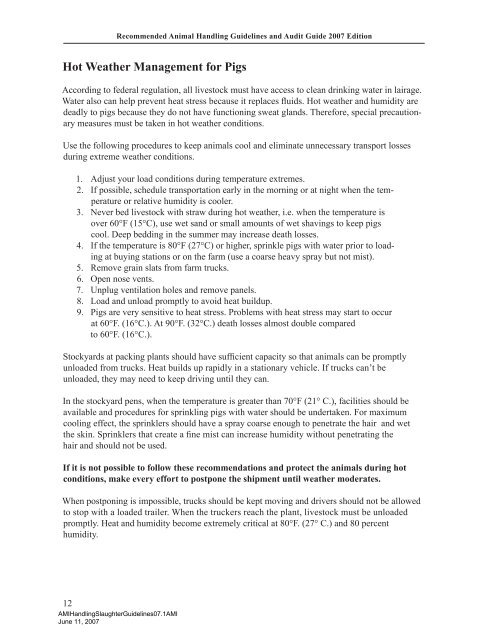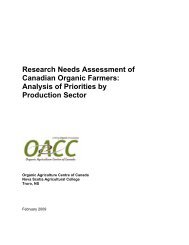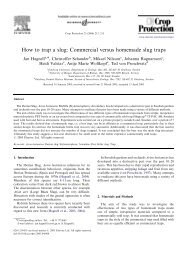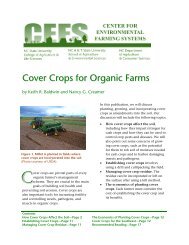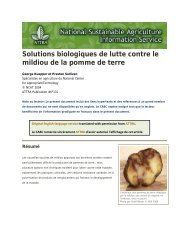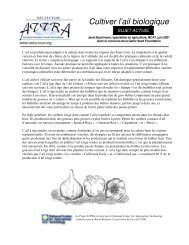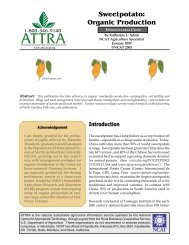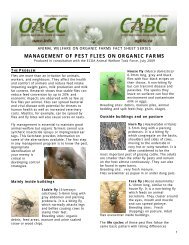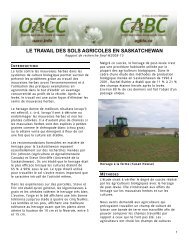Recommended Animal Handling Guidelines and Audit Guide
Recommended Animal Handling Guidelines and Audit Guide
Recommended Animal Handling Guidelines and Audit Guide
- No tags were found...
You also want an ePaper? Increase the reach of your titles
YUMPU automatically turns print PDFs into web optimized ePapers that Google loves.
<strong>Recommended</strong> <strong>Animal</strong> <strong>H<strong>and</strong>ling</strong> <strong><strong>Guide</strong>lines</strong> <strong>and</strong> <strong>Audit</strong> <strong>Guide</strong> 2007 EditionHot Weather Management for PigsAccording to federal regulation, all livestock must have access to clean drinking water in lairage.Water also can help prevent heat stress because it replaces fluids. Hot weather <strong>and</strong> humidity aredeadly to pigs because they do not have functioning sweat gl<strong>and</strong>s. Therefore, special precautionarymeasures must be taken in hot weather conditions.Use the following procedures to keep animals cool <strong>and</strong> eliminate unnecessary transport lossesduring extreme weather conditions.1. Adjust your load conditions during temperature extremes.2. If possible, schedule transportation early in the morning or at night when the temperatureor relative humidity is cooler.3. Never bed livestock with straw during hot weather, i.e. when the temperature isover 60°F (15°C), use wet s<strong>and</strong> or small amounts of wet shavings to keep pigscool. Deep bedding in the summer may increase death losses.4. If the temperature is 80°F (27°C) or higher, sprinkle pigs with water prior to loadingat buying stations or on the farm (use a coarse heavy spray but not mist).5. Remove grain slats from farm trucks.6. Open nose vents.7. Unplug ventilation holes <strong>and</strong> remove panels.8. Load <strong>and</strong> unload promptly to avoid heat buildup.9. Pigs are very sensitive to heat stress. Problems with heat stress may start to occurat 60°F. (16°C.). At 90°F. (32°C.) death losses almost double comparedto 60°F. (16°C.).Stockyards at packing plants should have sufficient capacity so that animals can be promptlyunloaded from trucks. Heat builds up rapidly in a stationary vehicle. If trucks can’t beunloaded, they may need to keep driving until they can.In the stockyard pens, when the temperature is greater than 70°F (21° C.), facilities should beavailable <strong>and</strong> procedures for sprinkling pigs with water should be undertaken. For maximumcooling effect, the sprinklers should have a spray coarse enough to penetrate the hair <strong>and</strong> wetthe skin. Sprinklers that create a fine mist can increase humidity without penetrating thehair <strong>and</strong> should not be used.If it is not possible to follow these recommendations <strong>and</strong> protect the animals during hotconditions, make every effort to postpone the shipment until weather moderates.When postponing is impossible, trucks should be kept moving <strong>and</strong> drivers should not be allowedto stop with a loaded trailer. When the truckers reach the plant, livestock must be unloadedpromptly. Heat <strong>and</strong> humidity become extremely critical at 80°F. (27° C.) <strong>and</strong> 80 percenthumidity.12AMI<strong>H<strong>and</strong>ling</strong>Slaughter<strong><strong>Guide</strong>lines</strong>07.1AMIJune 11, 2007


